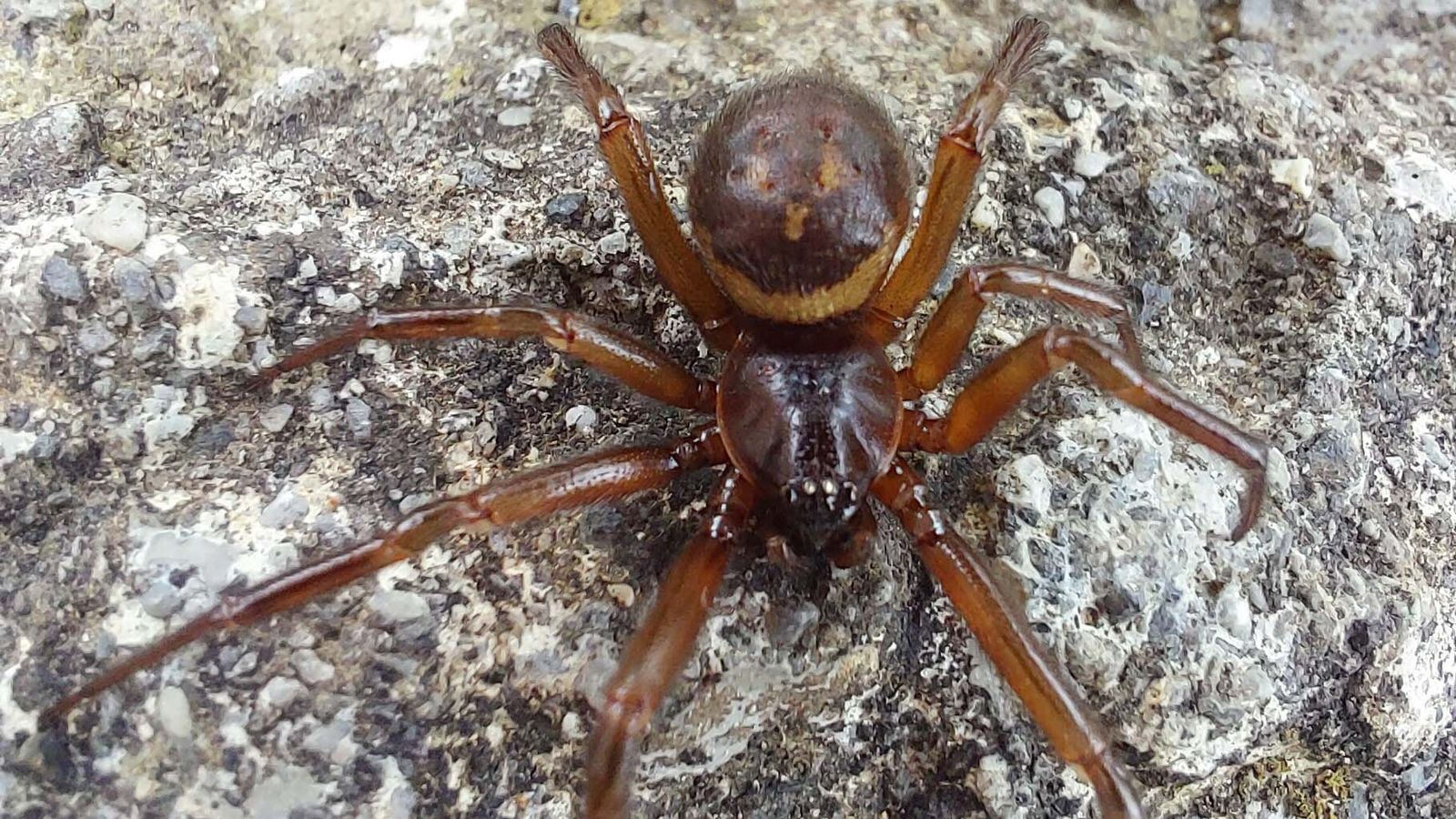The bite of a noble false widow spider is up to 230 times more poisonous than native Irish spiders, a study has found.
A team of researchers at National University of Ireland, Galway (NUIG) investigated the potency of the spider’s venom to understand why it is so successful at spreading through towns and cities worldwide.
They found that not only is the species’ venom much more potent than that of any common northern European spider, it is also able to adapt its attacking behaviour to emerge victorious in different scenarios.
The study also revealed false widows can make calculated decisions on whether to attack large or small prey depending on how much venom they have left in their glands.
If little venom is available, they avoid large opponents that could injure them and instead focus on small prey.
The scientists also found that in battle, noble false widows do not inject venom randomly but target the parts of their enemy’s body that have the most nerves – where its neurotoxic venom will be most efficient.
It could explain why the species can conquer much larger animals such as lizards, bats, shrews and other spiders.
Homophobic slurs and a violent assault – but this man’s attacker can’t be charged with a hate crime
Irish Prime Minister Micheal Martin says UK does not ‘fully get’ Good Friday Agreement amid plans to override parts of Northern Ireland Protocol
Mother-of-two dies after car plunges into Cork river
The noble false widow spider killed and ate 95% of its opponents during the study, published in the international journal Toxins.
Originating from Madeira and the Canary Islands, the noble false widow (Steatoda nobilis) could potentially become one of the world’s most invasive species of spider.
It was first reported in southern England in 1879 and has spread to Scotland, Wales and Ireland in recent decades, as well as to Europe, east Asia, North and South America.
Its numbers in the UK have increased rapidly since the 1980s.
The spider’s bite can cause a range of mild to severe symptoms, though little is known about its impact on native species.
Dr Michel Dugon, who over the last five years led the team at the NUIG’s Venom Systems lab, said: “Over the years, we have learned a lot about the noble false widow and its venom.
“This study is another important step to understand the true impact this species has on the ecosystems it invades throughout the world.”
Co-senior author Dr John Dunbar described the noble false widow spider as a “truly remarkable animal”.
“At every turn this species has surprised us in its ability to become globally invasive and dominate habitats it occupies,” he said.
“The tiniest amounts of venom – about 1,000th of a raindrop – can cause medically significant symptoms in humans that are about 250,000 times larger than them.
“Each new study brings us closer to understanding how exactly they are achieving their success.”






